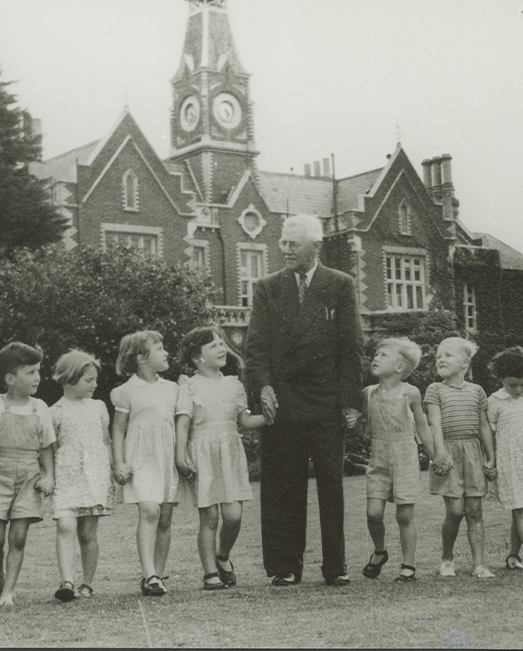Community
Copyright@ Australian Catholic University 1998-2025 | ABN 15 050 192 660 CRICOS registered provider: 00004G | PRV12008
Copyright@ Australian Catholic University 1998-2025 | ABN 15 050 192 660 CRICOS registered provider: 00004G | PRV12008

For children raised in institutional care in Australia, their personal history has often been a closed book, with official records remaining firmly out of reach. But since 2011, a landmark project has started to open those doors to the past, providing a lifeline for many seeking to come to terms with difficult childhoods and hazy memories.
More than 500,000 Australians spent at least part of their childhood in institutional care, most before the 1970s. Recent work, including The Forgotten Australians report, has exposed the depth of trauma experienced by thousands of children and the psychological scars they carry into adulthood.
Find and Connect is a comprehensive web-based resource for Forgotten Australians, former child migrants and anyone interested in the history of child welfare in Australia.

Emeritus Professor Shurlee Swain from ACU’s National School of Arts led the project, which was a joint initiative between ACU, University of Melbourne, and the Federal Department of Social Services.
Professor Swain said Find and Connect recognises the importance of giving people as much access as possible to details about their upbringing.
“People who grew up in institutional care can now access the kind of history that the rest of us get when we go to family dinners,” said Professor Swain.
“They generally don’t have photo albums like everyone else, and seeing pictures of where they grew up starts to fill out their personal histories. Then they can answer questions like, ‘I have a vague memory of a house with a long driveway. What was that?’

“Often these people want to have something to show their own kids and to share how they grew up. It’s their way of saying, ‘This is who I am’. While we can’t fill in all the gaps, the background information we offer on Find and Connect make their pasts a lot richer.”
Since Find and Connect launched in 2011, almost six million people have utilised its resources, “and those numbers aren’t going down,” adds Professor Swain, indicating a resource like this was very much in demand.
“The expertise of historians is to locate and analyse documents from the past, so we learn a lot about archives – what they are, where they are, and how to read and interpret them,” she said. “With this expertise, combined with the broader research that exists around children in institutions, it enabled us to hit the ground running when we launched.”

Before the website, information was not only difficult to access, but it often lacked detail.
“Sometimes, all people had were their formal records,” said Professor Swain.
“But these could be as simple as two pieces of paper – one listing the day you entered care, and the other listing the day you left an institution. That’s not very satisfying if you want to understand your life.
“What we as historians and archivists know is that there will always be other records in other places. By giving people more information, it means they can ask more questions.”
Find and Connect now offers a huge range of resources and opportunities for people seeking answers.

“Through our site, care leavers can look up any home in Australia,” Professor Swain said. “They can see photographs; they can find out if it still exists; what it used to be called and what it’s called now. They can get links to newspaper references; links to the relevant passages in Royal Commission reports; links to personal memoirs of people who were in that home. They can discover where its records are held, if those records have survived over the years, and how to go about accessing them.”
Professor Swain emphasises that Find and Connect is not for everyone and if people are not interested in digging into their pasts right now, “We just say, it’s there when you’re ready.
“Different people tend to ask questions at different times of their life, or sometimes not at all, but maybe their children want to know. We can’t take them to their records, we just tell them where they are and what to expect from the processes involved.

“Find and Connect may or may not bring a sense of peace and closure. It can really depend on the history of an institution and what a person may find. For some people, it starts off as a journey that never ends because the records are incomplete and finding a little bit makes you want to find more and more and more.”
Emeritus Professor Shurlee Swain is a researcher of Australian and comparative social history in the National School of the Arts. Discover how to pursue a career in history at ACU.
Copyright@ Australian Catholic University 1998-2025 | ABN 15 050 192 660 CRICOS registered provider: 00004G | PRV12008